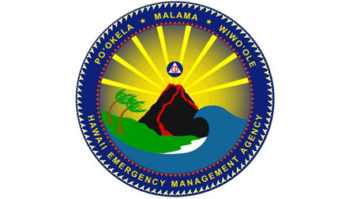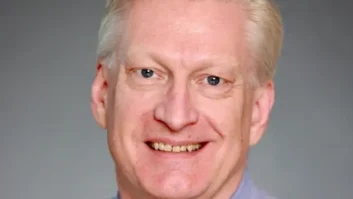Among speakers at last week’s Radio Show convention was Lisa Fowlkes, deputy chief of the FCC’s Public Safety and Homeland Security Bureau.
Fowlkes participated in a Q&A session moderated by Radio World’s Paul McLane, who asked panelists to be prepared to discuss several topics including alerting. The FCC staff has provided RW with a copy of Fowlkes’ notes, which we share here knowing the interest in EAS and related topics.
Regarding CAP:

Lisa Fowlkes speaks at the Radio Show. Richard Mertz is in background. Photo by Jim Peck -As many of you know, FEMA has announced its adoption of the Common Alerting Protocol version 1.2, as the common messaging protocol that will be used for its Integrated Public Alert and Warning System (IPAWS). The FCC was pleased at this announcement as the adoption of the new CAP standard will ultimately transform America’s emergency alert and warning capabilities and better enable Americans to receive these potentially life-saving alerts over multiple technologies.
-FEMA’s announcement of CAP has triggered the 180-day period by which broadcasters and other EAS Participants must be able to accept a CAP-formatted EAS message.
-In light of the introduction of CAP, the commission is examining what changes, if any, it should make to its EAS rules. Early this year, the Bureau issued a Public Notice seeking informal comment on this issue. The comments will be used to draft a Notice of Proposed Rulemaking for the full commission’s consideration. In addition, last year, we tasked the FCC’s Communications Security, Reliability and Interoperability Council (CSRIC) to develop and make recommendations on this issue. The informal working group assigned to work on this issue is chaired by Damon Penn, assistant administrator at FEMA and Pat Roberts, president of the Florida Association of Broadcasters. We expect the CSRIC to take up this issue and present recommendations to the FCC on this front within the next few months.
Regarding a National EAS Test:
-The FCC continues to work with FEMA, NOAA and the Executive Office of the President on a National EAS Test. The purpose of the test is to ascertain what works well and work doesn’t in the presidential EAS and to fix what doesn’t work. In other words, to ensure and enhance the reliability of the system so that should the president need to activate the EAS to speak to the American public, it will work.
-Currently, no date has been set for a national test.
Earlier this year, the FCC commenced a rulemaking proceeding seeking comment on proposed rules to facilitate a nationwide EAS test. The commenters generally expressed support for the test and the Bureau is currently drafting an order recommending adoption of rules to facilitate such a test for the full commission’s consideration.
Also, earlier this year, the FCC, along with FEMA, Alaska state officials and the Alaska Broadcasters Association, conducted a test of the presidential EAS in Alaska. The test was generally successful and provided a number of lessons learned that will be used as we plan for a national test.
One of the those lessons learned was that we will need to implement a comprehensive outreach program to educate state and local government alerting officials, EAS participants and the public about the test. We look forward to working with NAB and the broadcast industry as we move forward on this important aspect of the test.
There is something broadcasters, in cooperation with your State Emergency Communications Committees, can do now in preparation for the EAS test. Review and update your states’ EAS plans; review the manner in which you deploy your EAS assets to ensure end-to-end connections and the required redundancies to minimize any single points of failure within your states’ EAS architecture.
Regarding possible federal funding for CAP compliance:
-The FCC’s rules require that, within 180 days after FEMA adopts the CAP standard, EAS Participants must be able to receive CAP-formatted EAS messages. Compliance with this may require anything between a software updraft for a current generation Encoder/Decoder to the replacement of an old Encoder/Decoder. Absent authority from Congress, the FCC has no authority to provide any type of funding, including credits from annual regulatory fees, for broadcasters to purchase new equipment, if that is necessary.
Regarding Commercial Mobile Alert System:
· The FCC continues to work with FEMA and the wireless industry on development, testing and deployment of a Commercial Mobile Alert System (CMAS), a system that will allow subscribers to receive emergency alerts over their mobile devices.
· Much progress has been made with CMAS over the last year. Last December, FEMA announced design specifications for the gateway interface it will use to send CMAS alerts to participating wireless carriers. In addition, Sprint recently announced that it would, in coordination with the State of California, conduct a test of the technology it plans to use to support CMAS.
Regarding the National Broadband Plan:
· As I’m sure everyone is aware, earlier this year, the commission released its National Broadband Plan. This Plan included two recommendations regarding emergency alerting:
· That the commission initiate an inquiry proceeding to examine the policy, technological and legal issues related to a broadband-based, redundant next generation alerting system. This inquiry would examine, EAS, CMAS and IPAWS to understand how broadband technologies could enhance those systems. It would also look at how to leverage the Internet. The Bureau anticipates presenting a draft inquiry for the full commission’s consideration in early 2011.
· That the Executive Branch should clarify agency roles on implementation and maintenance of next-generation alerting. Specifically, the Executive Branch should clarify the responsibilities of each federal agency in the implementation, maintenance and administration of next-generation alerting systems, should include milestones and necessary actions for implementation and establish a system for accountability among the federal agencies responsible for emergency alerting. In response to this recommendation, last spring, the National Security Staff established the First Responder and Public Communications Sub-Interagency Policy Council which consists of various agencies, including the FCC, FEMA, NOAA and the White House Military Office, to address among other things, emergency alerting.
Regarding the Disaster Information Reporting System:
-The Disaster Information Reporting System (DIRS) was launched in September 2007. The system is one of the FCC’s many emergency response initiatives put in place following Hurricane Katrina. During Hurricane Katrina, FCC (as well as other federal agencies) spent a lot of time reaching out to broadcasters and other communications providers in the disaster area trying to assess the status of their operations. Following Hurricane Katrina, many communications service providers expressed a desire to see a streamlined approach to this information collection process in which one agency would collect this information. DIRS was established in response to these suggestions.
-DIRS is a voluntary, web-based system in which broadcast licensees and other communications service providers (broadcast, cable, wireline and wireless) can provide outage and other situational awareness information regarding their operations. The information submitted into DIRS is used by the FCC and other federal agencies with emergency response responsibilities to assess the status of communications services in the disaster-impacted area. It can also be used to identify any communications service providers that may need assistance such as fuel, generator, etc. While we always continue to enhance the system, the reaction from the federal agencies such as FEMA that use the DIRS information and communications service providers has been quite positive.
-DIRS is a terrific example of a public/private partnership at its best. In developing the system, the FCC worked with NAB and other communications stakeholders. In addition, NAB and state broadcasters continue to be great supporters in our efforts to increase the number of broadcast participants.
-Since its inception, DIRS has been activated five times, including Hurricane Ike in 2008, the Kentucky ice storms in 2009 and most recently for Hurricane Earl.
-Currently, there are 892 broadcast companies in DIRS.
-We strongly encourage broadcasters who haven’t done so to register for DIRS. In fact, we have been working in partnership with NAB and the state broadcasters associations to increase broadcast participation. If you have already registered for DIRS, we encourage you to periodically check your contact information to make sure it is up-to-date.
-DIRS is a win-win: for broadcasters. It provides an avenue to let federal agencies know if they may need assistance with restoration of their communications systems; for the FCC and other federal agencies with emergency response responsibilities, it allow us to get an accurate and timely picture of the status of communications services in the impacted area and to identify and provide assistance to those who need it.






